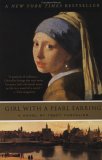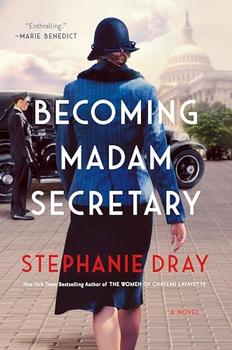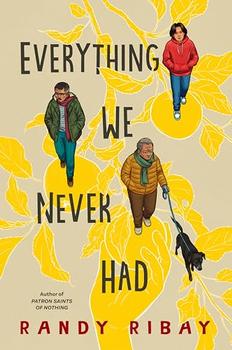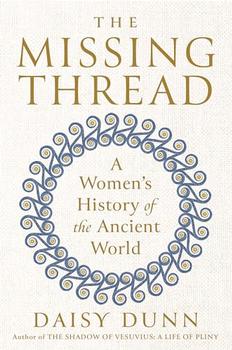Book Club Discussion Questions
In a book club? Subscribe to our Book Club Newsletter!
Please be aware that this discussion guide will contain spoilers!
About the Book
In mid-career, the renowned 17th century Baroque artist Johannes Vermeer painted "Girl with a Pearl Earring," which has been called the Dutch Mona Lisa. Girl with a Pearl Earring tells the story behind the advent of this famous painting, all the while depicting life in 17th century Delft, a small Dutch city with a burgeoning art community.
The novel centers on Griet, the Protestant daughter of a Delft tile painter who lost his sight in a kiln accident. In order to bring income to her struggling family, Griet must work as a maid for a more financially sound family. When Jan Vermeer and his wife approve of Griet as a maid for their growing Catholic household, she leaves home and quickly enters adult life. The Vermeer household, with its five children, grandmother and long-time servant, is ready to make Griet's working life difficult. Though her help is sorely needed, her beauty and innocence are both coveted and resented. Vermeer's wife Catharina, long banished from her husband's studio for her clumsiness and lack of genuine interest in art, is immediately wary of Griet, a visually talented girl who exhibits signs of artistic promise. Taneke, the faithful servant to the grandmother, proves her protective loyalty by keeping a close eye on Griet's every move.
The artist himself, however, holds another view entirely of the young maid. Recognizing Griet's talents, Vermeer takes her on as his studio assistant and surreptitiously teaches her to grind paints and develop color palettes in the remote attic. Though reluctant to overstep her boundaries in the cagey Vermeer household, Griet is overjoyed both to work with her intriguing master and to lend some breath to her natural inclinations—colors and composition—neither of which she had ever been able to develop. Together, Vermeer and Griet conceal the apprenticeship from the family until Vermeer's most prominent patron demands that the lovely maid be the subject of his next commissioned work. Vermeer must paint Griet—an awkward, charged situation for them both.
Chevalier's account of the artistic process—from the grinding of paints to the inclusion and removal of background objects—lay at the core of the novel. Her inventive portrayal of this tumultuous time, when Protestantism began to dominate Catholicism and the growing bourgeoisie took the place of the Church as patrons of the arts, draws the reader into a lively, if little known, time and place in history.
A Little Background
The Baroque period is remembered less by one specific style of art than as a period of time. Derived from the Portuguese "barocco" for "irregular pearl," Baroque was comprised of many diversions from Biblically based Renaissance painting. The Protestant Reformation unleashed artists from rote depictions of scenes from the Bible and allowed them to venture into increasingly more interesting domestic domains. Ladies of the day would pose before silent musical instruments in rooms adorned with the trappings of success, like maps of newly explored territories and shelves with expensive volumes of books. As the merchant class gained monetary status in the community, so did their desire to be painted, just as royalty was just a few decades earlier.
Jan Vermeer (1632-1675), a native of Delft who never left the small city, relied on the bourgeoisie for his living. A converted Catholic for his wedding day, Vermeer struggled to support a large family. Many of his paintings depict the wives or daughters of his Protestant patrons caught in the middle of common household actions—pouring a pitcher of water, writing a letter, or playing an instrument. He strove for realism, going so far as to blend sand in his paints to create an accurate texture of bricks in the famous portrait of his hometown, "View of Delft."
The most well known departure from Vermeer's calculated paintings is the intriguing, mysterious subject of "Girl with a Pearl Earring," thought to be painted in 1665. In the painting, a young woman, adorned in an unusual head wrap and wearing a prominent pearl-drop earring, turns to face the painter over her left shoulder—eyes sympathetic and slightly lowered, mouth demurely parted. The moment captured by the painting is captivating—sexually charged yet undeniably innocent. This is the subject of Chevalier's novel, Girl with a Pearl Earring. The novel both recognizes the painting's historic and artistic intensity and monopolizes on that intensity to create a fascinating story of a young girl in a small city during a unique period of time. Few authors could make the leaps necessary to enliven a centuries-old painting for modern readers. Tracy Chevalier achieves all this and more, keeping her audience wondering what the novel's outcome will bring as well as what facts their art history texts hold. Readers and art lovers alike will find this novel engaging, evocative, and insightful.
br>
DISCUSSION QUESTIONS
- Do you think Griet was typical of other girls her age? In what ways? How did she differ? Did you find her compassionate or selfish? Giving or judgmental?
- In many ways, the primary relationship in this novel appears to be between Griet and Vermeer. Do you think this is true? How do you feel about Vermeer's relationship with his wife? How does that come into play?
- Peering into 17th century Delft shows a small, self-sufficient city. Where do you think the many-pointed star at the city's center pointed toward? What was happening elsewhere at that time?
- Discuss the ways religion affected Griet's relationship with Vermeer. His wife? Maria Thins?
- Maria Thins obviously understood Vermeer's art more than his wife did. Why do you think this was the case? Do you think she shared Griet's talents?
- Do you think Griet made the right choice when she married the butcher's son? Did she have other options?
- How is Delft different to or similar to your town or city? Are the social structures comparable?
- Though Girl with a Pearl Earring appears to be about one man and woman, there are several relationships at work. Which is the most difficult relationship? Which is the most promising?
For more information about other Penguin Readers Guides, please call the Penguin Marketing Department at (800) 778-6425, email at reading@penguinputnam.com or write to us at:
Penguin Books
Marketing Department CC
Readers' Guides
375 Hudson Street
New York, NY 10014-3657
Additional Reading Guide Questions Contributed By 'Ruby' in October 2002
- In Girl with a Pearl Earring, Tracy Chevalier treats us to a richly appointed portrait of intersecting faiths, fracturing family dynamics, erotic awakenings, community scandals, religious tensions, and aesthetic compromises-all filtered brilliantly through the eyes of the young narrator Griet, whose concise, wide-eyed perspective functions much like Vermeer's camera obscura, rendering with particularly sharp precision and subtle insight the character of 17th-century Delft itself. "The camera obscura helps me to see in a different way, to see more of what is there," Vermeer muses. Discuss the way in which Chevalier's writing style achieves a similar effect. What techniques does she use to establish the novel's particular tone and tension, to enrich the imagery, to develop her character's motives, and to encourage us "to see more of what is there"?
- What is the significance of the eight-pointed star situated among the stones at the center of the town square? What does its presence underscore about Griet's position in society, whether as a young woman, as the daughter of a recently impoverished family, or as the Protestant maid to a Catholic family? How does Griet's relationship to the star, and the choices she makes in relation to its eight points, evolve through the course of Chevalier's novel?
- What is the quality of life, and what are the opportunities available, for a young Dutch woman in the 1660s and 1670s? For all of Griet's talent for looking at the world from an artist's high-resolution vantage, is her eventual progression from housemaid to housewife really nothing but an inevitability, given both the cultural repression of her gender as well as her parents' poverty? Discuss the subtle ways in which Girl with a Pearl Earring contends with these issues.
- Look again at Vermeer's painting, "Girl with a Pearl Earring." In what ways has your perception of the painting changed as a result of reading Chevalier's book? Are you more likely to attach particular emotions to the girl's wonderfully ambiguous expression, given Chevalier's elaborate conjectures and interpretations? Does the girl look more explicitly melancholy now? More amorous? Explain.
- Although Chevalier's book tells a bracingly personal story of one girl's transition into womanhood 325 years ago, the author's depictions of love, self-doubt, bravery, and evolving maturity are in many ways universal. In what specific ways do you identify personally with Griet, and with the ways she confronts the challenges and heartaches in her life?
- "He is an exceptional man," van Leeuwenhoek says of his friend Johannes Vermeer. "His eyes are worth a room full of gold. But sometimes he sees the world only as he wants it to be, not as it is. He does not understand the consequences for others of his point of view." Is this an accurate description of Chevalier's characterization of the master painter in this novel? Discuss the particular ways in which Vermeer's failure "to understand the consequences for others" affects the other characters. For Griet, what could we say is the cumulative consequence of Vermeer's chronic refusal to see the world "as it is"?
- What does the future hold for Griet and her family? For Vermeer's older daughters? Construct an outline in your head for a hypothetical epilogue set in 1686, a decade after Griet sells the pearl earrings on the last page of the novel. What has happened in the interim?
Unless otherwise stated, this discussion guide is reprinted with the permission of Plume.
Any page references refer to a USA edition of the book, usually the trade paperback version, and may vary in other editions.




